Search
forLearn
5 / 12 resultslearn HMI-115
much-hyped research compound targeting prolactin receptor in scalp
learn GHK-Cu
a copper peptide showing promise in both regrowth and reversing gray hair
learn Caffeine
the stimulant you know and love can be used topically to stimulate hair
learn Minoxidil
An essential vasodilator with some anti-androgenic effects, has excellent safety record
Research
5 / 1000+ results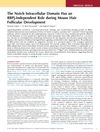
research The Notch Intracellular Domain Has an RBPj-Independent Role During Mouse Hair Follicular Development
The Notch signaling pathway helps in mouse hair development through a noncanonical mechanism that does not rely on RBPj or transcription.
research Primary Cicatricial Alopecias: Clinicopathology of 112 Cases
Accurate diagnosis and aggressive treatment are crucial to prevent permanent hair loss in cicatricial alopecia.
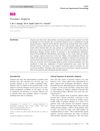
research Psoriatic Alopecia
Psoriasis can cause temporary or permanent hair loss.
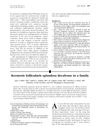
research Keratosis Follicularis Spinulosa Decalvans in a Family
KFSD is a genetic disorder causing hair loss and skin issues, with no effective treatment.
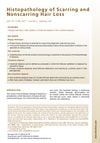
research Histopathology of Scarring and Nonscarring Hair Loss
The conclusion is that accurate diagnosis of different types of hair loss requires careful examination of tissue samples and understanding of clinical symptoms.
Community Join
5 / 268 resultscommunity SCUBE3 and GT20029 could be the closet thing to a cure: Hair Follicle Regeneration and Protection Against DHT
SCUBE3 and GT20029 are potential treatments for hair loss, with SCUBE3 stimulating hair growth and GT20029 protecting against DHT. A combined approach using SCUBE3, finasteride or dutasteride, and later GT20029 could provide a comprehensive treatment for androgenetic alopecia.
community DHT Harms Scalp Microbiome: DHT Itch is REAL
Increased Malassezia and Cutibacterium in the scalp microbiome are linked to higher sebum production and inflammation in androgenetic alopecia (AGA). Treatments include ciclopirox shampoo, benzoyl peroxide shampoo, clobetasol propionate, calcipotriol, minoxidil, finasteride, and dutasteride.
community Physio-metabolic method of treating androgenic alopecia. Cold receptors. The relationship between DHT, cold receptors, minoxidil and antiandrogens.
A method for treating androgenic alopecia using minoxidil, antiandrogens, exercise, and cold exposure to promote hair growth. Environmental factors and lifestyle changes, like diet and exercise, can improve treatment effectiveness.
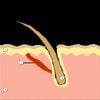
community Physio-metabolic method of treating androgenic alopecia. Cold receptors. The relationship between DHT, cold receptors, minoxidil and antiandrogens
Treating androgenic alopecia with minoxidil, finasteride, and antiandrogens, alongside exercise, cryotherapy, and natural substances to stimulate cold receptors for better hair growth. The method focuses on enhancing treatment effectiveness by considering environmental and behavioral factors and the role of cold receptors and muscle stress.

community Compressed part of research of theory of androgenic/anabolitic balance. AGA h-responders analytic. Theory of physio-metabolitic method of anti AGA treatment
The treatment for androgenetic alopecia involves using finasteride and minoxidil with intense exercise and cold exposure to boost metabolism and reduce androgenic effects, potentially leading to hair regrowth. This approach may activate biological pathways for improved hair and overall health.